Compare Concrete Mixes for Crafting
I know what it’s like standing at the concrete aisle and getting that odd look from the guys at the building supply store… Since I get a lot of questions about which concrete to use I’m going to eliminate some of the guesswork. Follow me as I Compare Concrete Mixes for Crafting
So many Concrete Mixes for Crafting:
When I started buying concrete many years ago, I’d be quite puzzled reading and checking the packages. Someone would often think I was sent by my husband to buy ‘normal’ concrete. After a few attempts of trying to explain what I wanted to do I would just buy what I felt was right since they usually thought I was a bit crazy… Even nowadays there are so many that it’s quite daunting.
Cement and Concrete is not the same:
Do be aware that concrete is usually a mixture of portland cement & other things like sand and aggregates. The ingredients like the gravel give the concrete mixture strength, make it into a rock-like substance once cured.
I did know what I did not want; large aggregate in my mix, which is what the regular Concrete mixes usually have. They are quite cheap and can work for large pours in molds (planters), sidewalk slabs or fence posts. I am usually making smaller projects that are going to be cast in molds or hand shaped for decorative home use.
‘Leaf-casting’ was perfect to make my Concrete crafting tests since I like to work quite thin. These leaves are made with my new favourite; Savoy Cabbage!
Working Fast:
Since time is always short around my place so I like to see my projects finish quickly and I am constantly improving or redesigning so I can’t wait weeks or even days!
I really do love the ‘fast set’ mixes but am not exactly sure about what makes them set & cure so quickly and also so much stronger. There are special additives in the concrete mix resulting in a dense and less porous finish. The sand in these mixes is so much more fine than regular sand as well. Fast set mixes have special chemicals that make curing quite quick. Each manufacturer usually has some version of fast-setting concrete mix. These mixes also come with quite a hike in price, but it’s worth it in my eyes!
All concrete mixes go through curing process that involves hydration. The water is needed in order for proper curing to happen, and ensure that strength is achieved. Traditional bricks are made by firing clay in a kiln, much different than concrete.
Rapidset Cementall:
The above Rapidset Cementall is probably my all-time favourite! The specs say that it can be used at different consistencies and it will cure much harder (up to 9000 psi compressive strength) than regular concrete. I am sure there are specific additives like polymers for strength and those also make it quite moldable at a thicker consistency. This mix does not contain large aggregates.
I learn by testing and it has worked well for many of my projects. Usually readers who have had concrete problems it’s because of their choice of concrete mix.
Rapidset Cementall Concrete Mix will start to thicken in about 30 seconds and can usually be taken out of the mold after 1 hour. The molds that I make are quite stiff and this mix will withstand the vigor needed to sometimes take them out. This mix is super fine, will pick up all the details and provide a super smooth white finish. A shiny finish can be achieved if the mold is also shiny material. It tends to not have many bubbles since the consistency can be fairly fine & does not need as much water as other mixes.
So Strong Concrete:
At a thin consistency it will be easily poured such as the Coasters and the Monster Eggs. The strength achieved in a thin wall is quite amazing! Check out all the projects that this mix is great for.
When reading the specs for different mixes it will give you a clue at how it can/should be used. ‘Featheredge’ means that it can be used at a very thin edge layer. Some mixes will state not to be used above a certain thickness.
The Rapidset Cementall mix can also be used at a thick; sculptable consistency. It will still slump ( a high pile of mix will flatten and sag) but not usually run away. That makes it work well for leaf casting such as the Lacy Circle the Smiling Stones. The workflow can be quite fast since sections harden quickly allowing more material to be added such as around an Orb or a Face sculpture fairly quickly. Temperature will also accelerate the setting/curing.
Dampening the drier sections is good practice before adhering new mix so there is good adhesion..
Quikrete Fastset All-crete:
Different brands offer similar products. Since entering the Quikrete contest I wanted to use a Quikrete product that compared to the RapidSet Cementall. I find this mix is almost exactly like Rapidset Cementall. It does seem like it comes under a few different names; Dual Purpose Grout & Structural Repair, Fastset Repair Mortar and Quikrete Fastset All-Crete. (See a selector guide here) It may be a difference of countries (here in Canada) Do NOT confuse it with any regular Fastset Mix though, as it will have large aggregate in it. If it says that it is meant to make sidewalks, post foundations and foundation walls then it usually contains large aggregate.
When comparing different types of concrete mix read the fine print and specifications.
Quikrete Fastset AllCrete has much of the same qualities, workability and also stated it can be used at all kinds of consistencies. It also a fine powder but the colour is more like a true concrete ‘grey’; darker than Rapidset Cementall.
The DIY Gigantic concrete Leaf Orb used this mix. It performed well at less than 1/2″ thick and the quick-setting allowed great workflow.
Make sure to consider enough overlap as this will make the open-work structure strong.
Quikrete Vinyl Concrete Patcher:
This product will also work well if you can wait a bit longer. Quikrete Vinyl Concrete Patcher also has additives to make it really strong but does not set as fast as the first 2. It has a window of 30 minutes of work time (conditions can affect it) and will be hard in 24 hours. It has good bonding abilities so layering works great as in this Giant Orb making.
You can see it still is a fine mix but I’d say it feels a bit more sandy. It cures to a similar concrete colour to the Fastset. You can see a slight bit more texture in the final product.
Sakrete Top’n Bond:
This is another of the bonding mixes with great strength and it performs very much like the Quikrete Vinyl Patch. Sakrete Top’n Bond will work for the continuous building around an orb shape (ball of some type) or casting of thin leaves. It will set & cure in about day as well.
My 20″ Giant Orbs have lasted well through the canadian winters and are light enough to carry with one hand. Amazingly only 1/4″ thick. These are considered ornamental garden sculpture so if it was stepped on it would likely break.
So, there you have 3 direct comparisons (left to right) Quikrete Fastset Allcrete, Rapidset Cementall, and Quikrete Vinyl Concrete Patcher. This is by no way the only available mixes but it does give me quite the selection. Also notice the difference in colours…
As for sealers; you will notice I often do not seal my orbs since I like the look of old patinated concrete. I am also happy to report I have not had any issues with cracking with these mixes. If you have issues about cracking see this post.
If you are still a bit apprehensive about working with concrete visit my tips post. Believe me; it does not mean that you need to be ‘covered in concrete’ to make some easy concrete crafting treasures! Concrete crafting is like making a cake mix that does not need baking… And you can almost keep it forever! Concrete crafting – made simple…
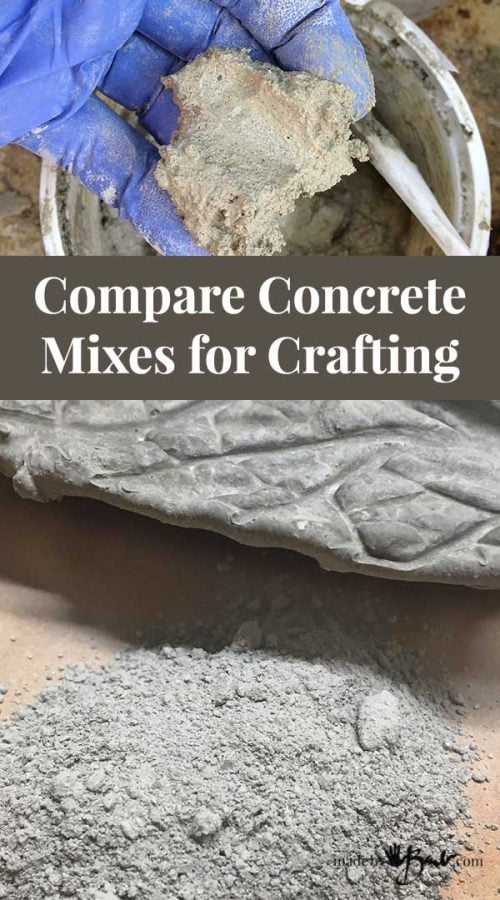



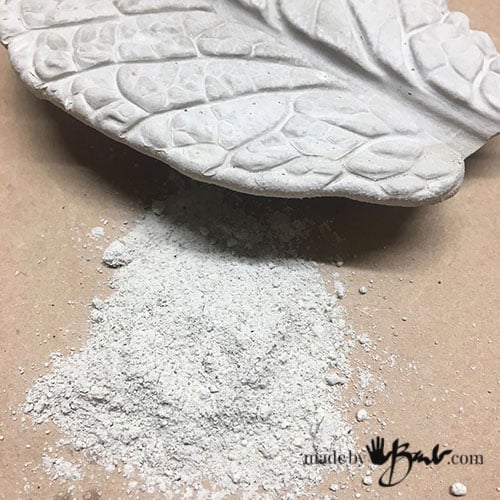
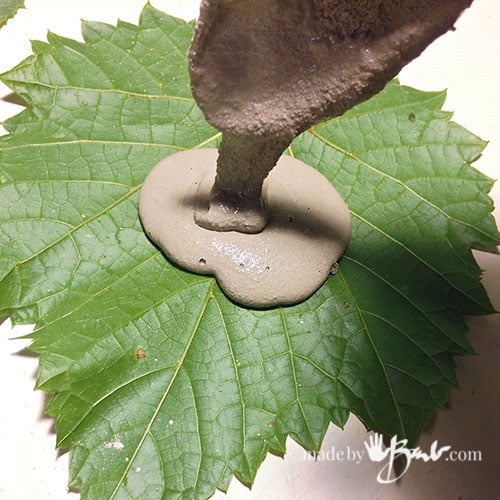
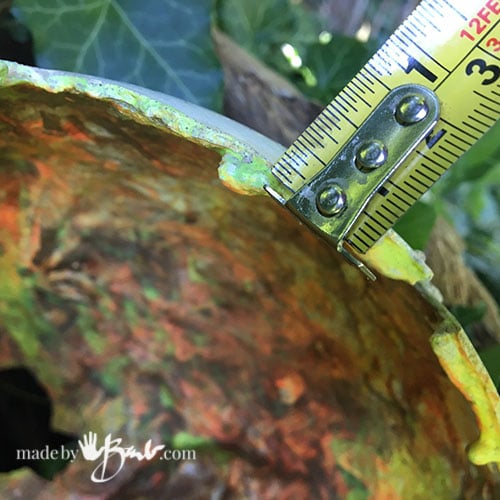
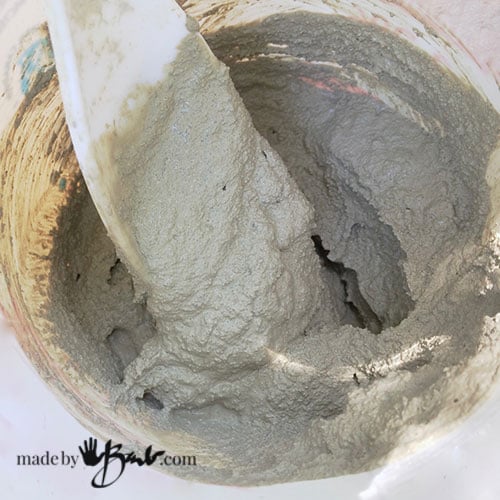
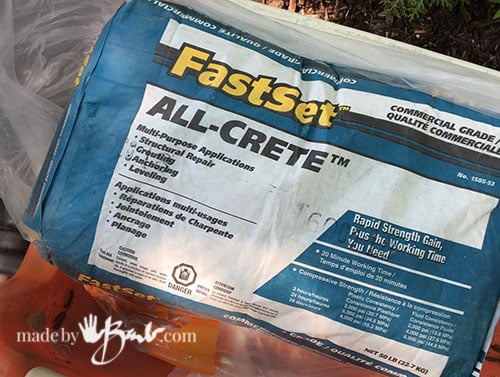
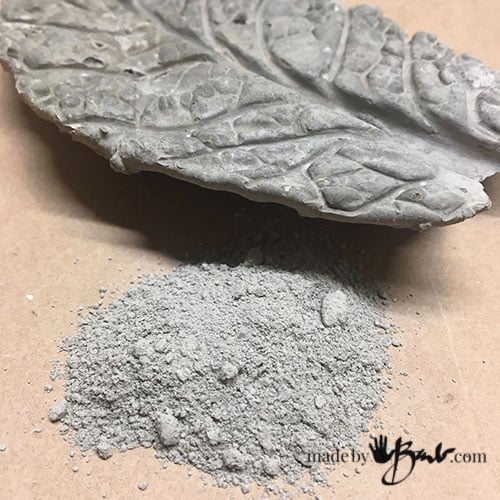
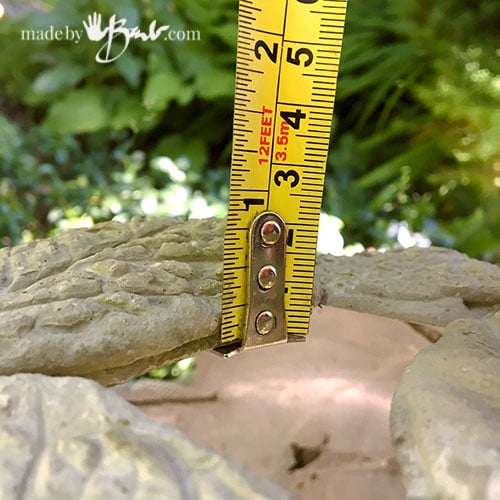

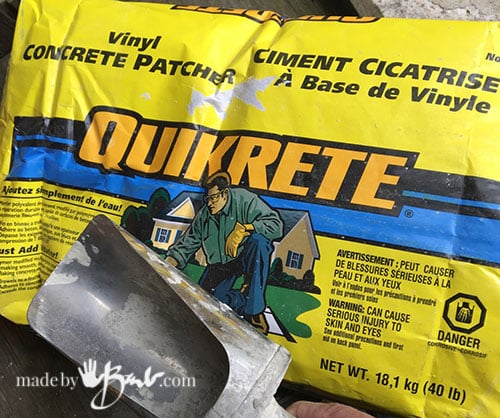
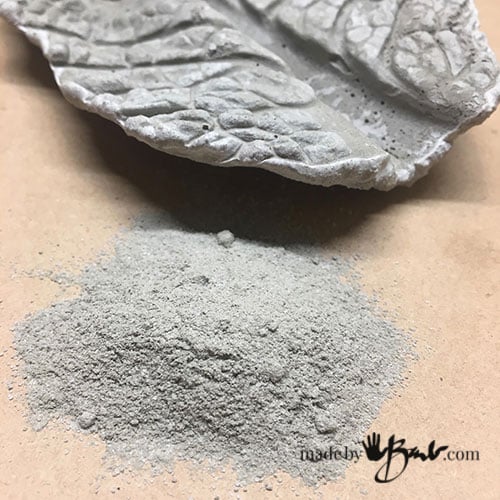
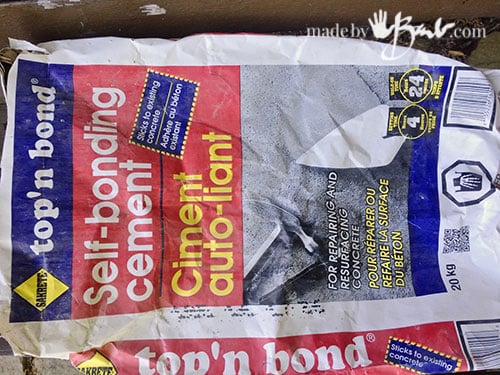
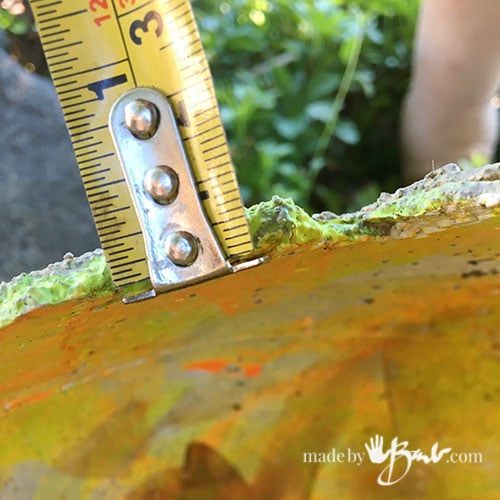
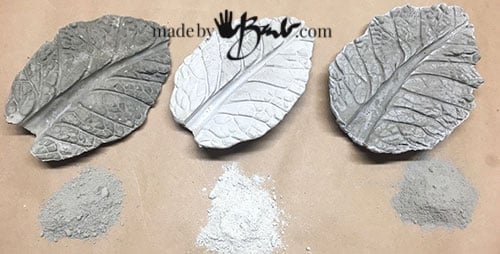
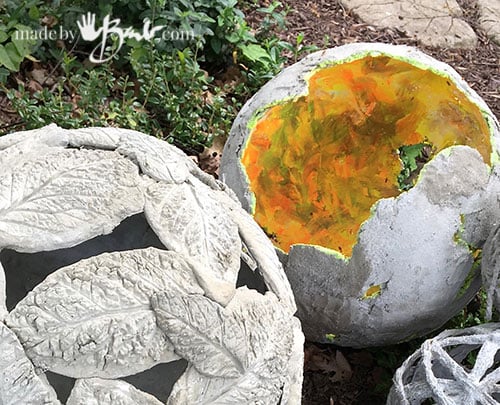
I’m having a hard time trying to fine the right thing to proud a paper moles no one asks like I’m out of my mind what do I need to proud a paper moles I love working with my hands can you please tell me what I need I’m going out of my mind from store to store I give up on my dream please help me THANKS
Linda
I’m a bit confused about what you are asking. I’ll email…
This is the absolute most helpful “crafting with concrete” post I have found, and I have been looking for weeks! Thank you so much for being so thorough!
FYI- St. Louis, Missouri
Enjoy! It’s a fun medium but also stay safe!
I am making a fairly house that will be mounted on a tree/ I wanted to make the front of the house a stone facade but not sure of the best way to attach the stone to a wooden base. I live in Zone 5 so the winters can be harsh. Any thoughts?
Perhaps there’s a way to use something that will not absorb water, as wood will become wet and then possibly crack any concrete that is attached to it. Plastic or other stable material could be covered with fabric that is dipped in a portland cement mix. Perhaps it could be a faux wood like I used here. If you do not worry about the deterioration of the wood a 2 part epoxy or construction glue could be used. ‘Hope that helps!
Thank you so much for all your information. I am thinking of making a giant orb for my garden. Never have done this before. I will definitely keep your information handy.
Jackie
Concrete is fun to work with but if you are new to it I suggest a small test run first. There’s some tips here as well… Happy making!
Thanks for the info. Question if the concrete would dry in 30 min do you layer in sections to do a large elephant leaf ? Can the process be slowed down to get the entire leaf covered.
Tanks fro the info.
There’s a few things to consider there! What do you plan to use it for? How strong? I use the regular sandtopping mix for my stepping stones, some might be 15 or so years old(?) The fast set mix can sometimes be slowed with a solution of citric acid, but you’d have to experiment the amount, probably little. Also using very cold water will slow it a bit. You can layer as long as you dampen the cured part so it does not ‘steal’ the water from the fresh mix. Good luck!
Hello, thank you for the helpful post..I am wanting to make a large clock face, light in color and as light weight as possible. I would try to make it 1/4″ max so it wasn’t too heavy and think a pourable consistency would be best. Do you have a recommendation of what would be the best product and any other tips?
Hmmm, I have my concerns… How large? If you want it quite large perhaps a base of styrofoam could make it lighter. (like the lightweight rocks) It would not a pourable version but could be interesting depending on how you cover it and with what fabric dipped in cement (fabric tests of Concrete draping)
Generally, my favourite strong mix is Rapidset Cementall. It does cure fast though which can be a good thing or not depending… I make these coasters with it.
Hello Barb,
Thank you so much for your post. It is so clear and easy to understand without any technical terms.
I have one question: if Rapidset Cementall Concrete Mix start setting after 30 seconds, do you think will it be hard to use it in a silicone mold? I have been trying to make small plant pots but I still looking for a strong, durable and water resistant product. Portland cement is working ok but I would prefer to use a product that cures in white. What would it be your choice?
Have a great day.
Silvia
I really love this mix and have used it in molds. Just be ready to use immediately. The temperature (hot summer) will also accelerate the setting. If pouring you will use a thinner consistency. Here are some of the ways I’ve used a mold. It is a dense mix that does not seem to absorb water as much as regular mix. Best concreting!
Hello again.
Thank you so much for your quick reply and your information. I looked at your web page and you do amazing things!. So inspiring!
I will try the mix with the epoxy resin. I cannot wait!
Thank you again.
Silvia
Thank you for this information! I’m going to start with a small project to gain some confidence.
Have you ever added a color to your concrete? If so, what did you use?
I have used some acrylic paint, and it does change the colour. The key is not to add too much that it starts to change the chemistry of the concrete. The Rapidset mix does not ‘like’ the paint that much. There is also an iron oxide that can be used to dye concrete. You could also consider colour after making such as the homemade acid stains
Love your tutorials, very clear and easily understood! If you wanted to keep the natural look of concrete, could you use the 3 types of mix you demonstrate if making a “leaf orb”? Would they adhere to each other?
Thanks! I have used the Rapidset Cementall to adhere and even repair other concrete. I think that’s the best bet or a similar type of mortar mix. Just make sure that the concrete is damp enoug to not ‘steal’ the moisture from the fresh mix. See also how I made the ‘Green Man‘.
Thank you Barb!
For me this post is like finding the famous Rosetta Stone.
But I can’t wait to get my hands on a bag of “Cement All” concrete
Thanks! Enjoy… Here’s a tip; mix up a tiny bit and see how fast it sets and how strong it is. It is quite different than the ‘regular’ concrete mixes.